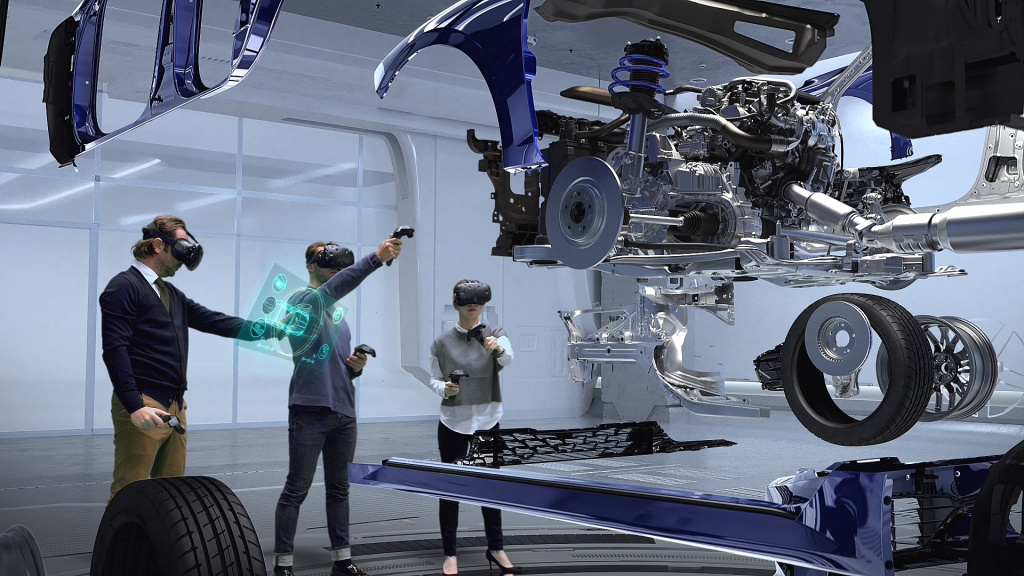1 апреля, 2021
Augmented reality for furniture retail

Most manufacturers and sellers of furniture and interior items do not imagine what wide opportunities new technologies open up to them when working with clients, for example, such as augmented reality (AR, Augmented Reality).
It is widely believed that the development of augmented reality is difficult and expensive, and therefore only representatives of large businesses can afford it. In fact, augmented reality can be adapted to any company, including in the furniture retail. The most famous example of a successful application of AR is an application for IKEA, which allows the consumer to «try on» furniture in the interior even before buying it. Amazon also offered a similar solution to its customers by developing the «AR view» program, which makes it possible to see furniture, kitchen gadgets and other goods in the house in advance. The «fitting» function helps the buyer to get rid of doubts when choosing a product. As statistics show, customers return almost ⅓ of their online purchases due to the difference between the image on the network and reality. This is because they can’t see, touch, or even try on the item before buying. Augmented reality technology reproduces an accurate 3D image of a product on the screen of a smartphone or tablet: size, shape, color, details and allows you to test it.
One of the fastest growing furniture brands in Britain Made.com those who sell through the app in the App Store and online store also faced the need to introduce augmented reality. The company’s clients needed to see the interior items being sold live, evaluate their dimensions and present them in the room. AR technology has allowed us to meet the need for a personal shopping experience, while maintaining a distance between the store and customers. The user was able to see in real time through the device’s camera how the furniture looks in his apartment, choose the material and color of the model. Later Made.com launched an online service for full-fledged interior design using AR technologies. The client scans the room with the device’s camera through a special application and selects from the proposed line of options for arrangement, based on the size of the room. The user can change the materials and color of the furniture at his discretion.
According to the Lowe’s innovations labs website, 95% of buyers prefer to interact with interactive 3D content. In some products, in the presence of 3D content, there is an increase in conversion from 10 to 50%. For example, in the company Top Concept, which offers designer furniture for home, work and leisure, after the introduction of AR-fitting, the user’s time on the site page has increased four times, and the number of pages viewed has increased 2.5 times.
Marketing research demonstrates that users like personalized marketing. Augmented reality allows you to collect data about customer preferences in order to give individual recommendations to each of them. At the same time, companies get an idea of the demands of the consumer audience, which allows them to adjust their products to the requirements of the market and remain relevant. 71% of the surveyed consumers said that they will make purchases more often if they use an app with AR. 40% of buyers are willing to pay more for the product after experiencing it through AR. This AR effect is explained by the fact that the technology allows you to improve the presentation of the product and the emotional interaction of the customer with the product, increase consumer engagement, opens up new opportunities for advertising, contributes to the growth of brand value.
Augmented reality allows furniture companies to:
- demonstrate to customers the advantages of the product, through its «fitting» in the interior;
- increase the number of sales and reduce the percentage of return;
- personalize offers;
- entertain and inform the audience;
- increase the effectiveness of marketing campaigns;
- create a «wow effect».
In 2019, Apple’s development in the field of augmented reality allowed iPhone and iPad users, starting with the 6S model, to introduce interior items into the surrounding space without a mobile application, directly from the website. A similar solution for android devices was proposed by Google. The so-called browser-based AR works without downloading a mobile application. As you can see, the technology is becoming easier to develop and use, which increases its potential for widespread implementation in the sales sphere. According to the message vc.ru the total volume of the AR market in 2018 was estimated at $11 billion, and by 2023 it should increase sixfold — to $60 billion. It is believed that the main engines of AR-developments will be healthcare and online retail.




